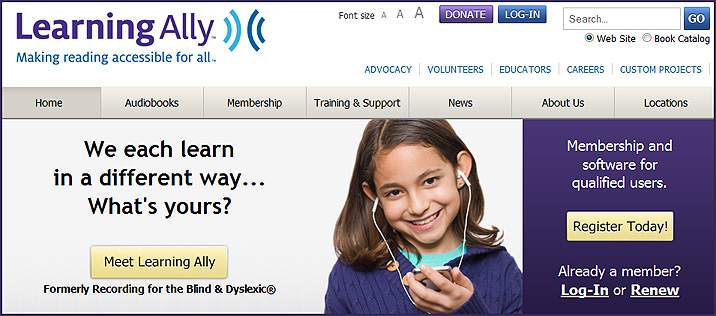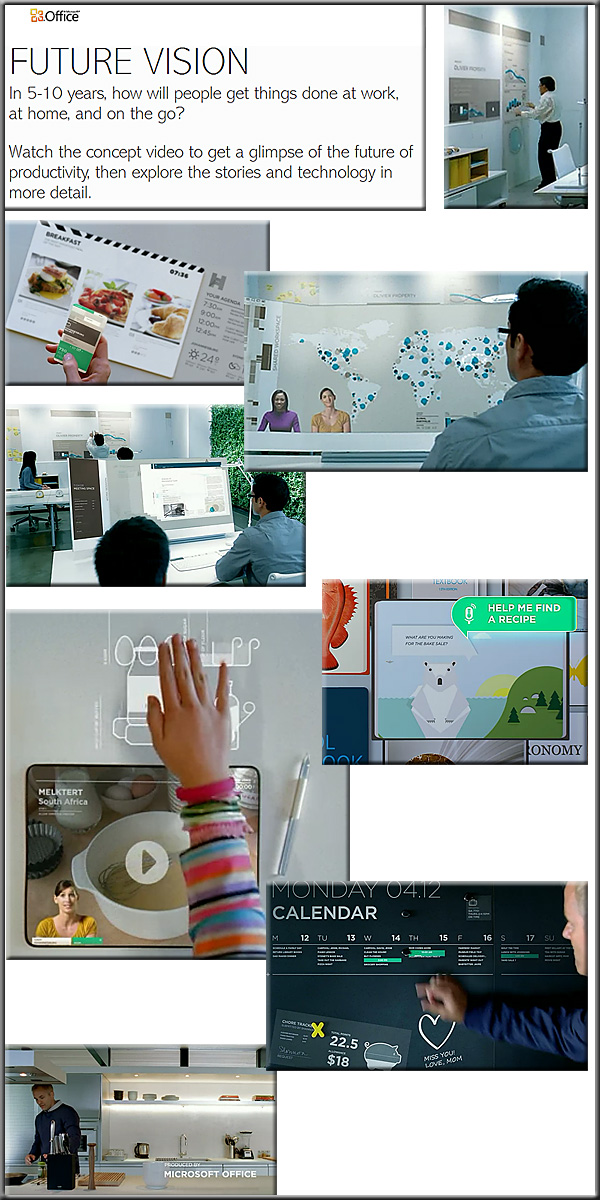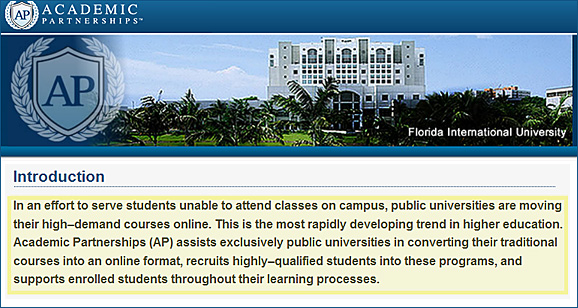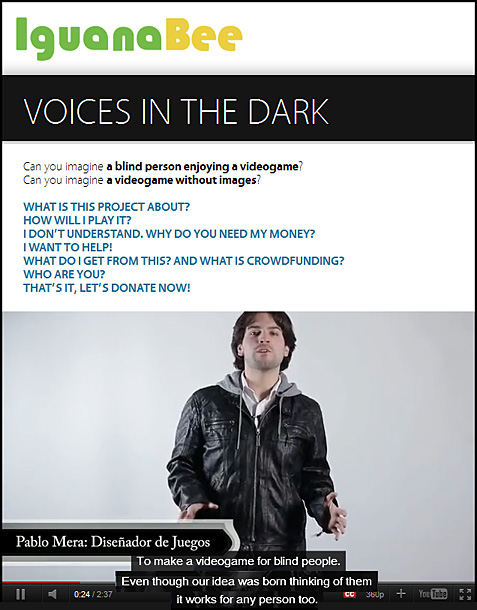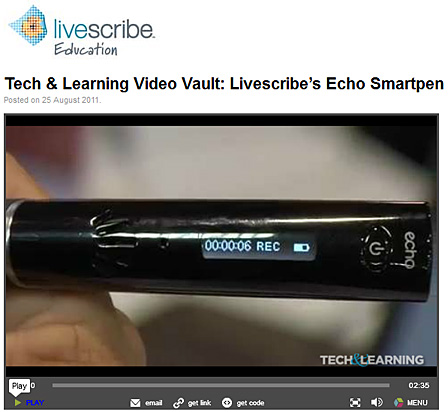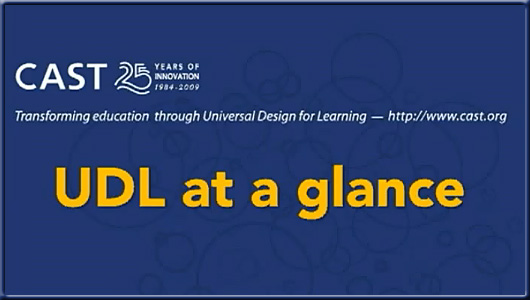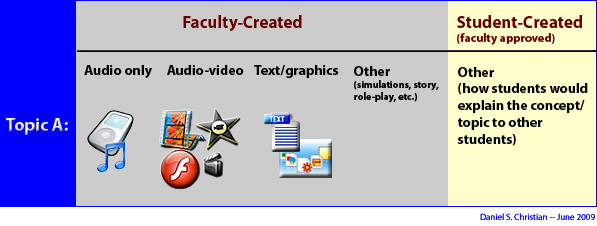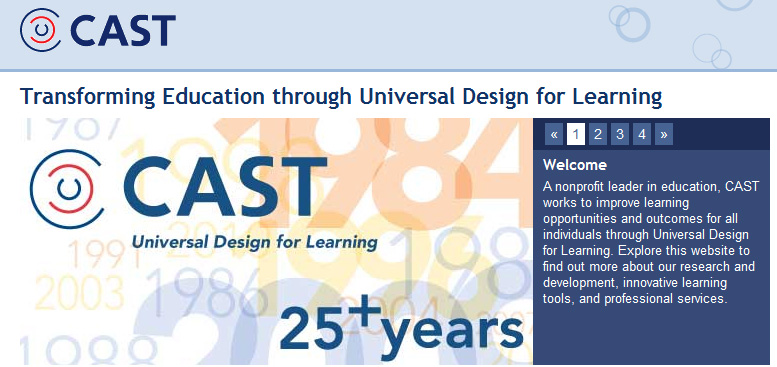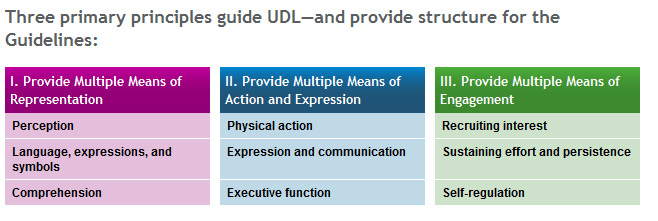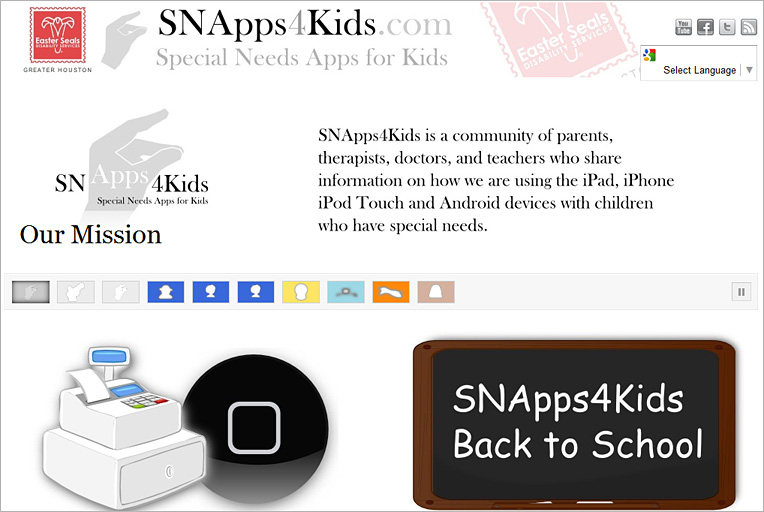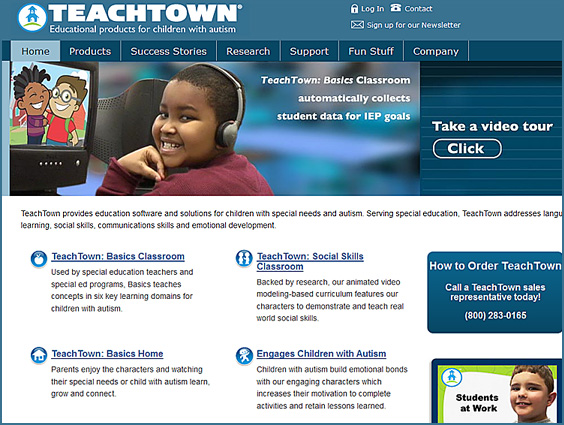40 inspiring blogs every special education teacher should read — from mastersinspecialeducation.org
E-Learning expands for special-needs students — from edweek.org by Nirvi Shah
But obstacles to greater participation remain, and questions persist about what works best for students with disabilities.
Universal Design for Learning: Meeting the needs of all students — from asha.org by Patricia Kelly Ralabate
Universal Design for Learning and Online Education — from academicimpressions.com
Re: event to be held on November 17, 2011 :: 1:00 – 2:45 p.m. EST
Universal Design for Learning: It’s Not Just for Disability Experts Anymore (The Confessions of a First-Time Teacher) — from National Collaborative on Workforce & Disability for Youth (NCWD/Youth) by Amy Katzel
Excerpt:
All students, with or without disabilities, have different strengths and weaknesses. Early on, it was clear to me that I had a wide range of abilities in the room. Some students started out unable to consistently construct full sentences, while others were already writing complex prose. Some students raised their hand frequently to answer questions, while others preferred to stay quiet. When we did reading assignments during class, everyone read at different speeds. Some youth demonstrated they understood the material on quizzes, but then struggled with applying those concepts to their essays.
When I get up in front of the class, to which student am I teaching?
Also see:
- Leading Project-Based Learning / Universal Design for Learning
- Universal Design for Learning (UDL): What it is and Why You Should Care — from ISTE.org
Here are two online-based modules from the Center for Applied Special Technology (CAST) regarding Universal Design for Learning (UDL):
These two free online modules introduce the theory, principles and application of Universal Design for Learning (UDL) to teachers and teacher candidates. The modules, each four to six hours in length, can be used in graduate and undergraduate education courses, professional development, consulting activities, and as a resource for educators across the country.
Module One, Introduction to UDL, offers an overview of UDL by addressing the three principles of UDL, the connection of UDL to neuroscience, and the impact of UDL on curriculum.
Module Two, Applying UDL to Lesson Development, provides practice applying the UDL principles and guidelines to instructional goals, methods, materials, and assessments.
CAST is a nonprofit research and development organization that works to expand learning opportunities for all individuals, especially those with disabilities, through Universal Design for Learning.
Founded in 1984 as the Center for Applied Special Technology, CAST has earned international recognition for its innovative contributions to educational products, classroom practices, and policies. Its staff includes specialists in education research and policy, neuropsychology, clinical/school psychology, technology, engineering, curriculum development, K-12 professional development, and more.
Also see:
- Universal Design for Learning (UDL) Supports Engagement & Success of All Youth — from ncwd-youth.info
Above resource from:
- 4 ways iPads are changing the lives of people with disabilities — from Mashable.com by
Addendums later on 7/19:
- Spotlight Award: iPad as “Game Changer” — from Elliott Masie The Learning CONSORTIUM is proud to announce that the iPad will receive a special “Game Changer” Learning Spotlight Award at Elliott Masie’s Learning 2011, November 6-9, in Orlando, FL.
- NASA releases iPad app for science research — from CNET.com by Don Reisinger









